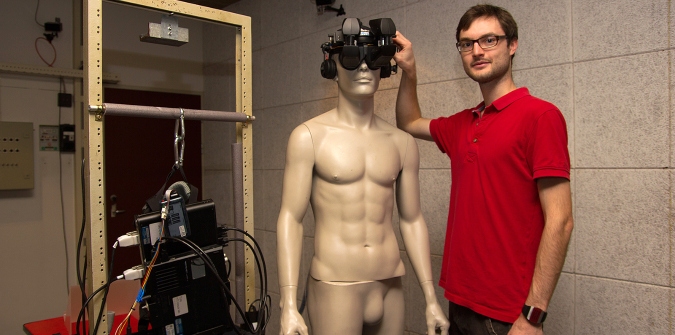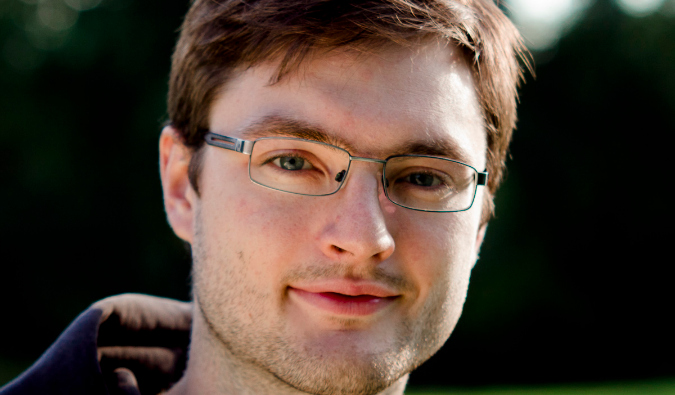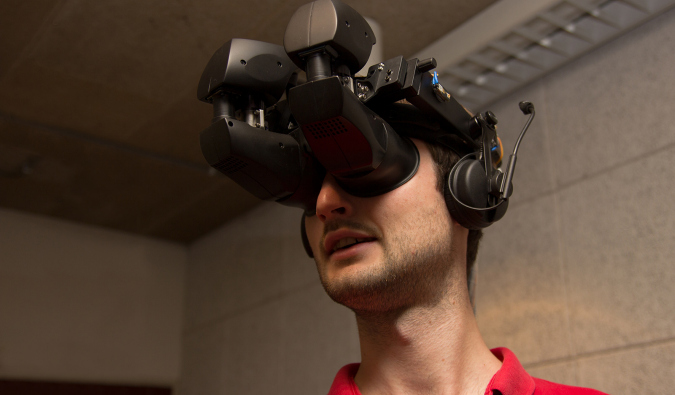How honest are you on your Facebook profile? Probably pretty truthful as your sister, college roommate and mom would probably call you out if you dropped anything a bit on the bogus side. But what if that FB profile you friended wasn’t actually a real person at all? How people react with a virtual (albeit unknown to them) online persona is just one of the interesting things Petr Kosnar, a designer and HTI researcher has investigated.
Kosnar is currently working as a design engineer at the Eindhoven University of Technology in the Netherlands and also does freelance design and development work. He has an undergraduate degree from Czech Technical University and a Master’s in Human Technology Interaction from Eindhoven University of Technology. His interests are manifold: UX, user research, interaction design, cognitive psychology, persuasive technology, psychology, prototyping, designing and conducting qualitative and quantitative research just for starters.
“I don’t specialize in one thing but I find it interesting to combine all different aspects and knowledge together,” he said. “I like predicting how humans are going to interact with technology in the future.”

Kosnar conducts research on human interactions with technology
He began his Facebook research in February 2011 and completed it this past summer. The end results however were a bit different than the goal he had going into the experiment.
“The original idea was what if I created a virtual person and tried to get friends and they would recommend some stuff and it would work better than advertising,” he explained.
So breaking a million Facebook rules, he created a virtual 14-year-old girl. Her friends grew to number around 700 and that got Kosnar thinking about how differently teenagers use Facebook compared to adults.
“So many people asking for friendship, why?” he said. “This is a fake profile with several hundred friends, about 80% girls, 20% boys in the same age group. How teenagers use Facebook, they want as many ‘things’ as possible, friends, likes, etc. The functions lose their meaning. They don’t want a friend; they want another number in the friend column. They like things because they want the poster to like their things back.”
As Kosnar explains, this phenomenon actually has a name: pointification.

Designer and researcher Petr Kosnar
“It comes from the field of game design, and describes the system that makes a person (typically a player) strive for as many points as possible,” he said. “It can be a boring game, with no story at all, and people still like to play it because they are collecting points.”
Kosnar was also shocked at the amount of information teenagers share online. He was able to see all the personal information the ‘friends’ of his virtual girl put online – address, school, Skype name, email, phone number.
“It’s all in most profiles, ask for friendship and you can access all their personal info,” he said. “Facebook is trying to protect kids, you can’t share publically if you are under 18, but all you have to do is ask for friendship and it’s automatically accepted. The different permission system doesn’t work.”
Kosnar eventually concluded that Facebook is an ultimate online game for children.
“It allows them to collect points (likes, shares, friends, family members, etc.) which makes them feel better and which determines their social status in a group of friends (the more “points” you have, the better you are).”
Kosnar’s passion though is Human Technology Interaction, how people interact with the technology that surrounds them. When people are interacting with technology, what’s going on in their minds? Kosnar explains it by comparing it to car design.

Travels in the virtual world
“Someone has to design the car with people in mind, how they drive, different stressful situations they come across, traffic, talking on the phone, etc.,” he said. “I study technology in this context, with humans interacting with technology.”
He adds that HTI is usually focused on a specific expertise, i.e. automotive, how do people make decisions in traffic? Other researchers are focused on gaming, data, etc. The field consists of a lot of subtopics and expertise and requires knowledge of psychology and technology to know what’s feasible. Currently, he’s researching peripheral interaction.
“Typically, people are engaged by doing one activity primarily and during that time they do one or more other things which they do not pay much attention to – a peripheral activity,” he said. “What we are doing is testing how complex the peripheral activity can be so as not to interfere too much with the primary activity. The results are going to help designers better understand how to design devices meant to be used peripherally.”
He also has a wearable technology project coming up in which he and his colleagues will be investigating smart textiles.
“I want to study the meaningful interactions of the digital world, the tangible world, the human mind, behaviour of people and all the things that we are not yet aware of today.”
**
Have you ever fibbed on Facebook?












 Reading time: 4 minutes
Reading time: 4 minutes 




















